The ongoing Han Kuang military exercises entered their sixth day yesterday, simulating repelling enemy landings in Penghu County, setting up fortifications in Tainan, laying mines in waters in Kaohsiung and conducting urban combat drills in Taipei.
At 5am in Penghu — part of the exercise’s first combat zone — participating units responded to a simulated rapid enemy landing on beaches, combining infantry as well as armored personnel.
First Combat Zone Commander Chen Chun-yuan (陳俊源) led the combined armed troops utilizing a variety of weapons systems.
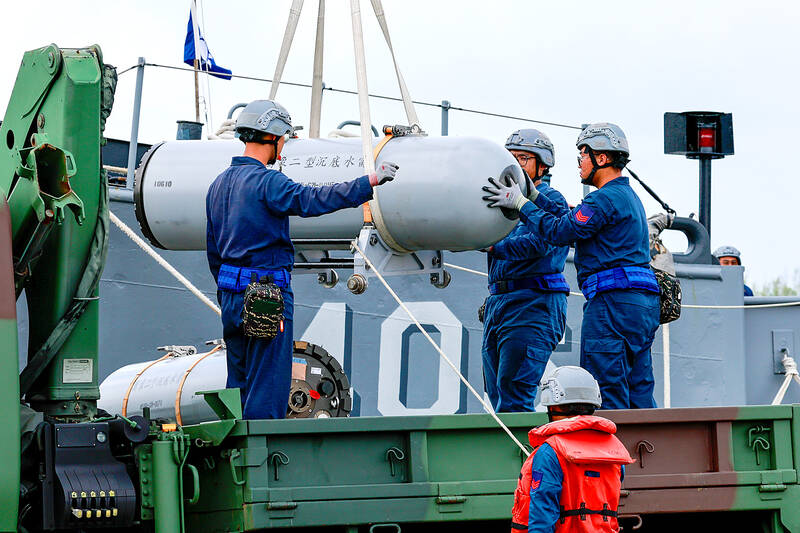
Photo: EPA
Wang Keng-sheng (王鏗勝), the commander in charge of the Penghu Defense Command’s mechanized battalion, said he would give the exercise a score of “100 percent.”
Since taking leadership of the unit in May, Wang said he has followed the principle of “one day without war, one day without feeling at ease,” ensuring that participating personnel are sure of their roles.
In Tainan, the army’s 54th Engineer Group conducted a nighttime exercise in constructing defensive fortifications to block a potential enemy advance.
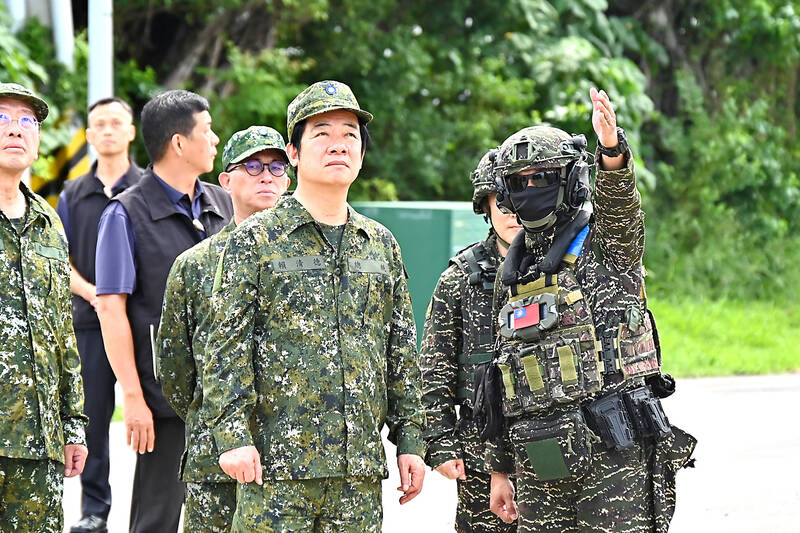
Photo: Lee Hui-chou, Taipei Times
The unit deployed “Czech hedgehogs,” moved abandoned vehicles into the roadway and installed razor wire barricades, among other measures, to make it difficult for enemy personnel and vehicles to pass.
Some drivers who passed by the area while soldiers set up the fortifications shouted words of encouragement.
It is important to test how quickly fortifications could be erected in a low-light environment, personnel said.
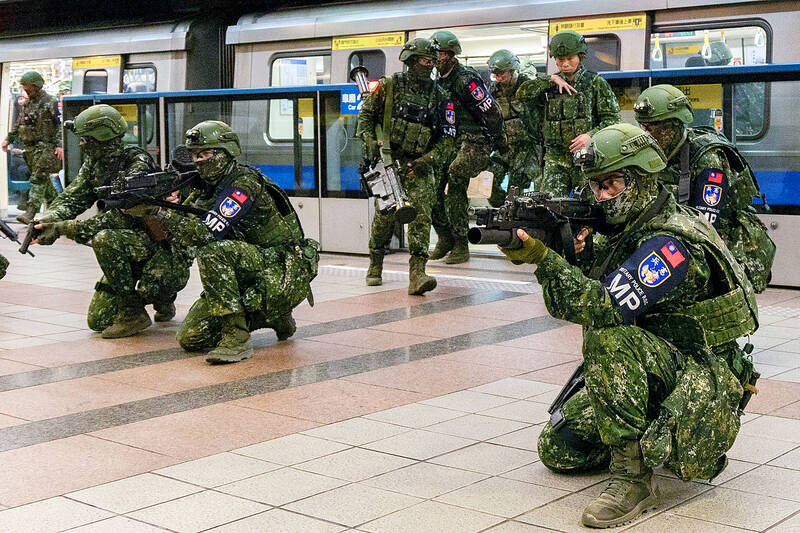
Photo: AFP
The site was cleared by 5am, they added.
In Kaohsiung’s Zuoying District (左營), President William Lai (賴清德) observed a mine-laying exercise and provided personnel with extra meal money to encourage them and show appreciation for their work.
Chang Chia-ming (張家銘), from the navy’s 192nd Fleet’s mine operations squadron, told the president and other officials about the three different types of mines Taiwan uses, all domestically designed and produced.
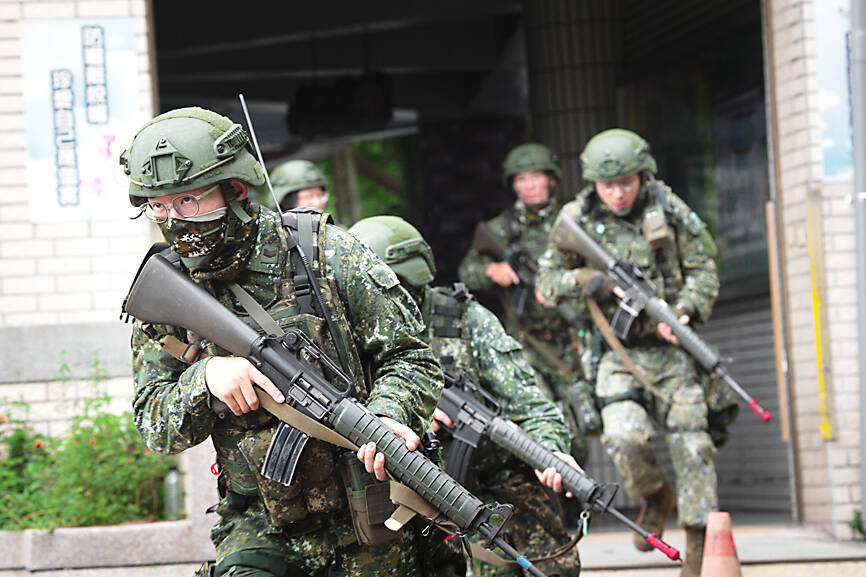
Photo: CNA
The mines target enemy surface vessels and submarines, Chang said, adding that they are a “shield” for the country.
Mines are cheap to deploy, but expensive and time-consuming to remove as an invading force, Chang said, citing historic examples such as the Korean War and the 1991 Gulf War.
In Taipei, US-made FIM-92 Stinger shoulder-fired missiles made a rare public appearance during early-morning drills in the Taipei MRT system simulating a Chinese invasion.
The exercises featured military police carrying Stingers, machine guns, 40mm grenade launchers and anti-armor rockets, and were held between Shandao Temple Station and Longshan Temple Station, while the MRT system was closed to passengers.
The Ministry of National Defense said the exercises simulated Taiwanese troops using the MRT system to quickly reach a target area and engage the enemy.
Separately, the ministry said that 17 Chinese aircraft were monitored in the airspace around Taiwan between 6am yesterday and 6am today. Of the 17 aircraft, seven crossed the median line of the Taiwan Strait, it said.
A further eight naval vessels were also spotted in the waters around Taiwan, it added.

TRAGEDY STRIKES TAIPEI: The suspect died after falling off a building after he threw smoke grenades into Taipei Main Station and went on a killing spree in Zhongshan A 27-year-old suspect allegedly threw smoke grenades in Taipei Main Station and then proceeded to Zhongshan MRT Station in a random killing spree that resulted in the death of the suspect and two other civilians, and seven injured, including one in critical condition, as of press time last night. The suspect, identified as a man surnamed Chang Wen (張文), allegedly began the attack at Taipei Main Station, the Taipei Fire Department said, adding that it received a report at 5:24pm that smoke grenades had been thrown in the station. One man in his 50s was rushed to hospital after a cardiac arrest

SAFETY FIRST: Double the number of police were deployed at the Taipei Marathon, while other cities released plans to bolster public event safety Authorities across Taiwan have stepped up security measures ahead of Christmas and New Year events, following a knife and smoke bomb attack in Taipei on Friday that left four people dead and 11 injured. In a bid to prevent potential copycat incidents, police deployments have been expanded for large gatherings, transport hubs, and other crowded public spaces, according to official statements from police and city authorities. Taipei Mayor Chiang Wan-an (蔣萬安) said the city has “comprehensively raised security readiness” in crowded areas, increased police deployments with armed officers, and intensified patrols during weekends and nighttime hours. For large-scale events, security checkpoints and explosives

PUBLIC SAFETY: The premier said that security would be tightened in transport hubs, while President Lai commended the public for their bravery The government is to deploy more police, including rapid response units, in crowded public areas to ensure a swift response to any threats, President William Lai (賴清德) said yesterday after a knife attack killed three people and injured 11 in Taipei the previous day. Lai made the remarks following a briefing by the National Police Agency on the progress of the investigation, saying that the attack underscored the importance of cooperation in public security between the central and local governments. The attack unfolded in the early evening on Friday around Taipei Main Station’s M7 exit and later near the Taipei MRT’s Zhongshan
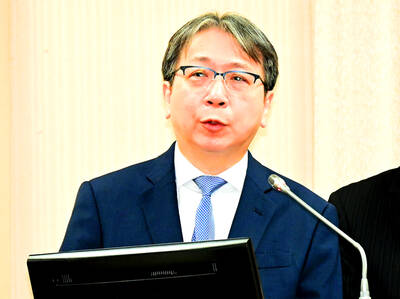
ON ALERT: Taiwan’s partners would issue warnings if China attempted to use Interpol to target Taiwanese, and the global body has mechanisms to prevent it, an official said China has stationed two to four people specializing in Taiwan affairs at its embassies in several democratic countries to monitor and harass Taiwanese, actions that the host nations would not tolerate, National Security Bureau (NSB) Director-General Tsai Ming-yen (蔡明彥) said yesterday. Tsai made the comments at a meeting of the legislature’s Foreign Affairs and National Defense Committee, which asked him and Minister of National Defense Wellington Koo (顧立雄) to report on potential conflicts in the Taiwan Strait and military preparedness. Democratic Progressive Party (DPP) Legislator Michelle Lin (林楚茵) expressed concern that Beijing has posted personnel from China’s Taiwan Affairs Office to its